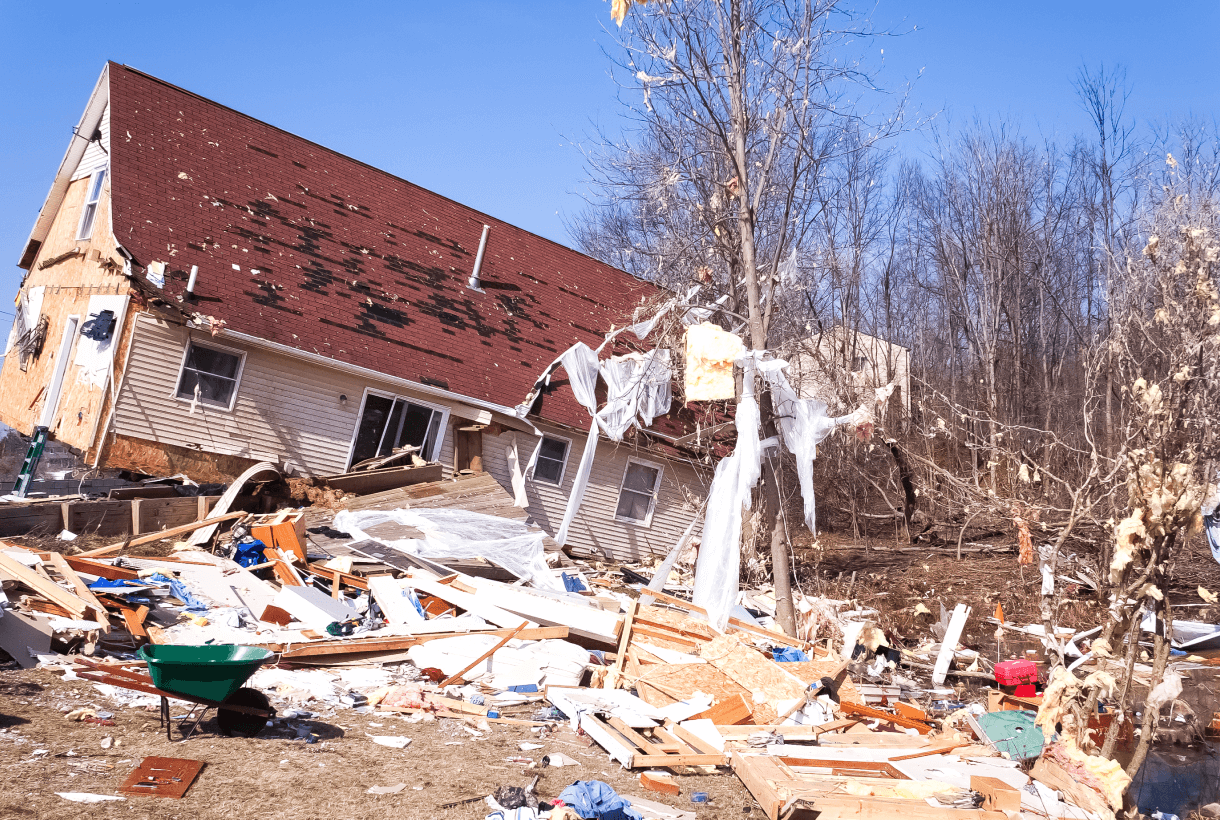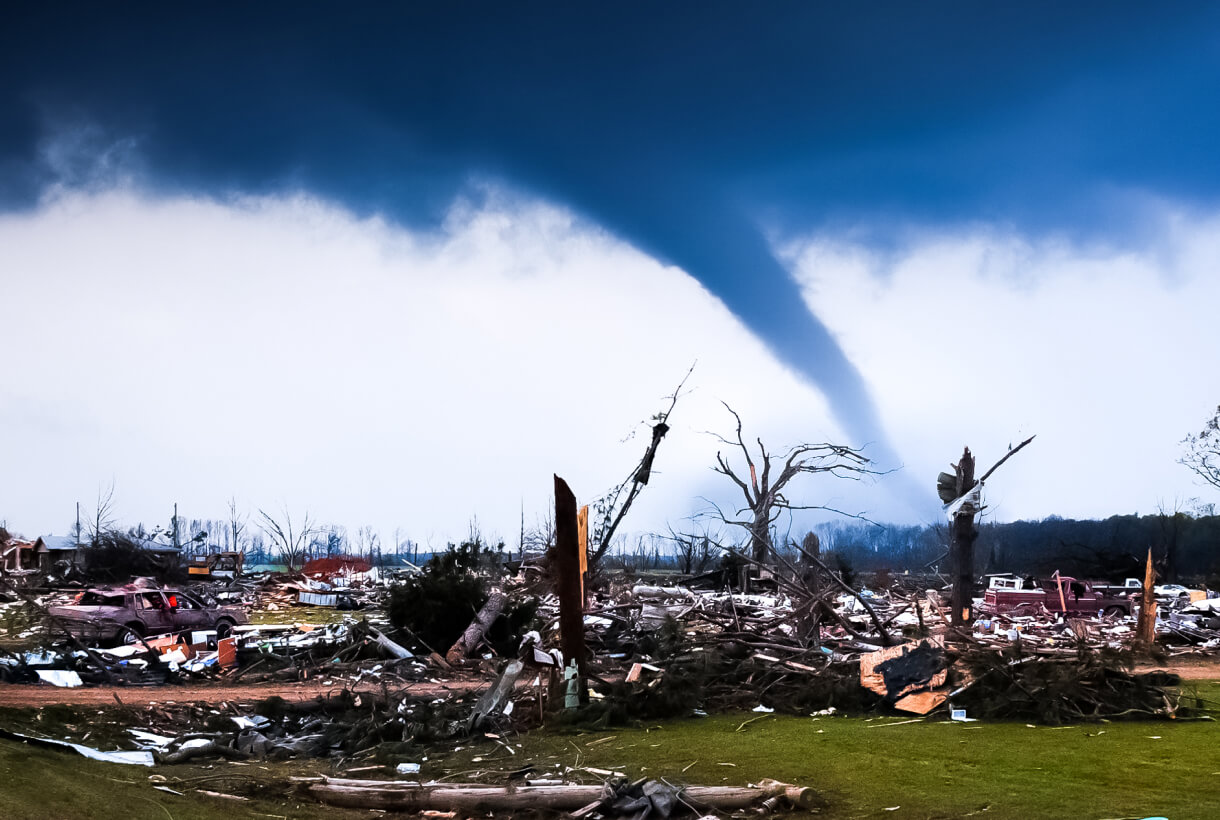“Tornadoes in February – in Michigan! This just happened miles from my house.”
This was the message from my coworker as I started work on Wednesday, February 28. Earlier that morning, an EF-2 tornado struck Grand Blanc, MI, causing residential and commercial damage; fortunately, no injuries were reported. The last time southeast Michigan experienced a significant tornado in February was 1974. Is this the new normal? “Gotta love Michigan weather: 71 degrees yesterday, tornadoes overnight, snow by noon the next day,” my coworker concluded. I’m very glad she and her family are okay.
This tornado caused power outages and ruptured gas lines, resulting in evacuations and school closures. Removing debris in frigid temperatures extended road closures and impacted public transit. The cascading impact on local businesses and the community was certainly felt this week. This weather event serves as a powerful reminder that severe weather patterns across the United States are becoming increasingly unpredictable and extreme. I want to highlight four notable tornado incidents in 2023, as reported by the National Oceanic and Atmospheric Administration (NOAA).
- On January 16, 2023, two tornadoes struck Iowa — the first January tornado in Iowa since 1967.
- On March 22, 2023, an EF-1 tornado struck near Los Angeles, the strongest tornado since 1983.
- On March 31, 2023, more than 110 tornadoes were confirmed by the National Weather Service — the highest number of recorded tornadoes over a 24-hour period in March.
- On April 1, 2023, a 700-yard-wide EF-3 tornado struck in Delaware — the widest tornado in the state's history.
These events last year illustrate that tornadoes can strike anywhere and with severity and frequency not seen before. Furthermore, the historic region for tornadoes in the U.S., “Tornado Alley,” appears to be shifting. A study of tornado activity from 1979 to 2017 suggests an increase in tornadoes in east Texas, Louisiana, Alabama and Mississippi. This “Dixie Alley” also experiences a Fall tornado season.
Raise Your Level of Tornado Preparedness
Use this resource center to evaluate your preparedness and strengthen your overall resilience when managing the impact of tornadoes.
Implications for Risk Managers
How do I prepare my organization for an unexpected tornado? How should we think about mass notifications during a tornado? My business primarily operates in “tornado alley,” so what does this trend mean for me?
Preparing for an unexpected tornado:
- As a kid growing up in California, I wouldn’t know what to do if I heard a tornado siren or if a teacher told the class to take cover for a tornado. Employees may have never expected to experience a tornado or recently relocated to an area that more regularly experiences them. It’s helpful to equip them with information and training about tornado emergencies and responses.
- Take an all-hazards approach to emergency planning, and rehearse plans for sudden and unexpected events, including tornadoes. How quickly can a response team within the company mobilize? These disasters strike quickly. Mobilizing a crisis management team within minutes is critical to providing timely, accurate and instructive information to employees, customers and partners.
Communicating during a tornado event:
- Public safety alerts, including tornado sirens, may not be in place or sent out in a timely manner. This makes it important for employees to receive emergency alerts on their devices, at home and at work. Encourage employees to heed public safety alerts and to pay close attention to emergency alerts from their employer or third-party provider.
- When thinking about mass notifications during a tornado, consider that power may go out and employees are taking shelter in areas that may have little or no cell service. To ensure maximum reach, a mass notification system should be multi-modal, geo-targeted and integrated with weather alerting systems for timely delivery. Consider the importance of two-way communication so that an employee can verify they received the alert and seamlessly communicate that they are safe or in need of assistance.
Preparing for cascading risk from tornado events:
- As was the case in Michigan this week, even smaller tornadoes can have a cascading impact on an affected area. This is even further amplified when tornadoes strike communities that aren’t expecting them. Employees may be trapped or unable to access roadways; schools are evacuated; hospitals are running on backup power; and the impact on manufacturing, shipping and data centers can delay timelines and damage customer experiences.
- Monitoring the risk landscape is essential. Critical Event Management (CEM) platforms allow for better tracking of a tornado’s progress and potential impacts. AI-powered data pipelines analytics can help identify risks early, enabling quicker and more informed decision-making. Consider factors like geography, population density and infrastructure when assessing the impact. This helps prioritize response efforts.
To learn more about how your organization can be more resilient when managing the dynamic risks tornadoes present, download our Tornado Preparedness Kit.


